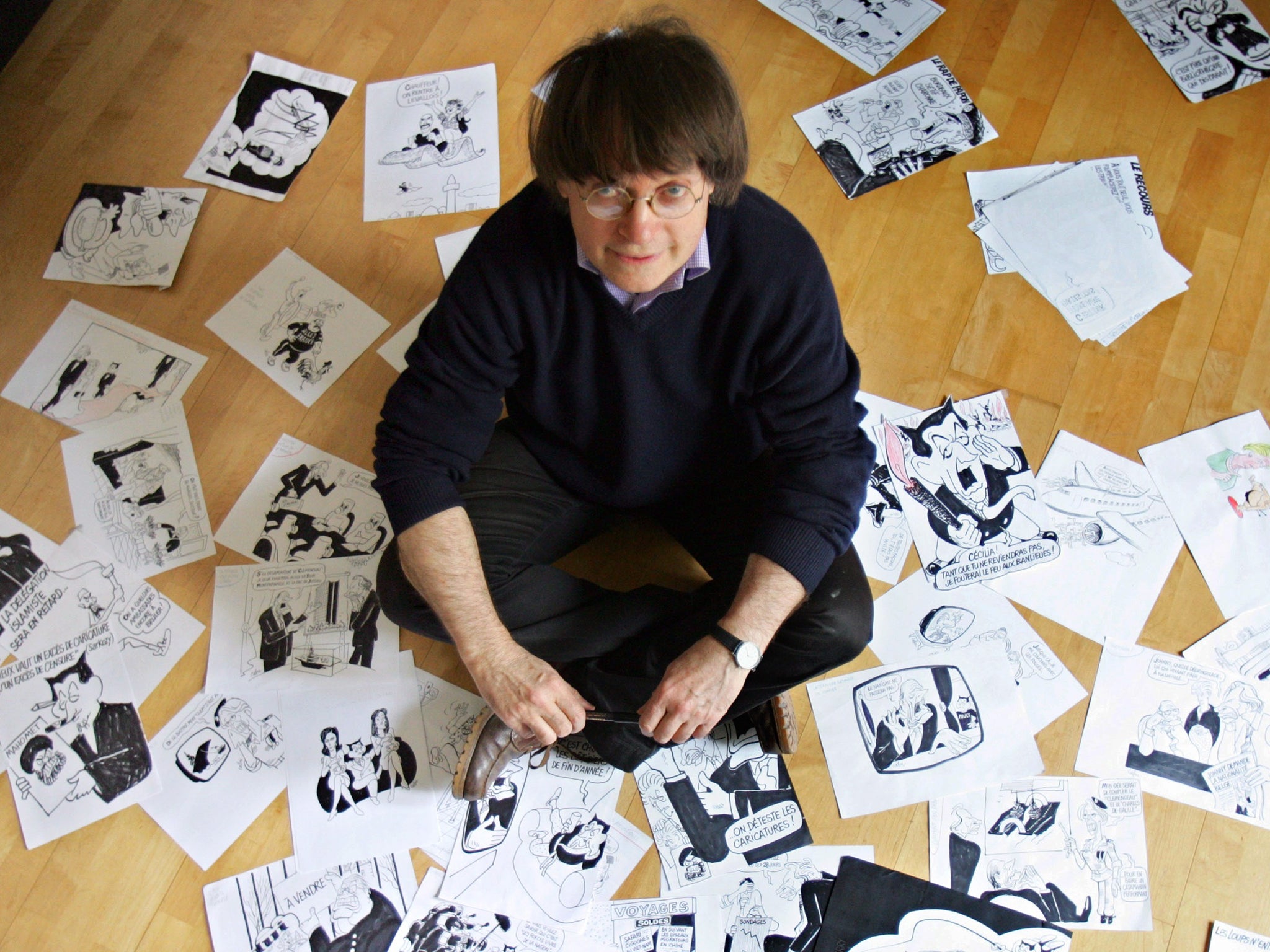Jean Cabut: Stalwart of Charlie Hebdo who created two of France's best-loved cartoon characters
In 2012 he said: 'The rise of fundamentalism in any religion has changed things. Ending up in court to argue about freedom of speech is bearable'

In 2006, when Charlie Hebdo reprinted the 12 drawings first published in the Danish newspaper Jyllands-Posten, Cabu drew an original cartoon for the cover. It showed the Prophet with his head in his hands, sobbing and saying "it's hard to be loved by jerks" next to the headline "Mohamed overwhelmed by fundamentalists", and provoked another outcry and a lawsuit from the Paris Grande Mosque and the Union of Islamic Organisations of France.
While the lawsuit failed, Cabu's cartoon became another cause célèbre, reproduced around the world, adding fuel to the fire and making the magazine a possible target for terrorists.
In 2012 he said, "the rise of fundamentalism in any religion has changed things. Ending up in court to argue about freedom of speech is bearable. But what you can't accept ... is to be the object of death threats for a cartoon."
While he shared the anti-conformist, anti-militarist and anti-religious streak of his Charlie Hebdo colleagues, who mostly originated from the classe ouvrière, Cabut was born into a bourgeois family. This background gave the eternal teenager with the ability to absorb the idiosyncrasies of people around him, a different outlook on life, and helped inspire two of France's best-loved cartoon characters, the somewhat autobiographical Le Grand Duduche, the awkward adolescent with a lazy streak, and Mon Beauf – "my brother-in-law".
Neither appeared in Charlie Hebdo but first popped up in the bande dessinée mainstream weekly Pilote, one of the many publications, including Le Monde, Libération, Paris Match, to which he contributed during a career that spanned more than six decades and more than 50,000 illustrations. These included the Camembert and biscuit tins he designed at 17 to book and record covers, including several jazz CDs, as well as releases by the children's TV presenter Dorothée, to whose programme he contributed between 1977 and 1987. He also produced cartoons live on the political show Droit De Réponse (Right of Reply).
Charlie Hebdo's editorial team undoubtedly contributed to Le Beauf's gestation with their anecdotes about well-meaning but dull brothers-in-law. Cabu, as he became known, maintained that a customer chewing the fat in a home town café had provided the original inspiration. "The main trait of the beauf is that he doesn't realise how boring, homophobic, macho, racist and vulgar he is. He speaks before he thinks," he said of the character who passed into French parlance and made it into Le Petit Robert dictionary in 1985.
He contributed "La Fille Du Colonel", a strip cartoon best remembered for its hapless adjutant, to the army magazine Le Bled while conscripted into the French army during the war in Algeria, and those 27 months shaped his belief system.
"When I have to draw a politician, I always ask myself the question: what would he be in the army? Jacques Chirac always looked like a sous-off, a sous officier – a non-commissioned officer – to me," he said of one of several politicians with whom he had run-ins, including Georges Pompidou and Raymond Marcellin. The latter banned Hara-Kiri Hebdo, tagline "Bête et Méchant" (stupid and nasty), after it marked the passing of Charles de Gaulle in the same week that a fire killed 146 people at a disco in south-eastern France with its infamous front page "Bal Tragique à Colombey: 1 mort" – Fatal Dance At Colombey: One Dead.
Profiled in a TV documentary, Cabu, Politiquement Incorrect, in 2006, he said. "Cartoonists make a living out of people's stupidity, a trait that only seems to be on the increase with the passing of the years. " He had one son, who died in 2010.
Born Châlons-sur-Marne 13 January 1938; died Paris 7 January 2015
Join our commenting forum
Join thought-provoking conversations, follow other Independent readers and see their replies
Comments
Bookmark popover
Removed from bookmarks